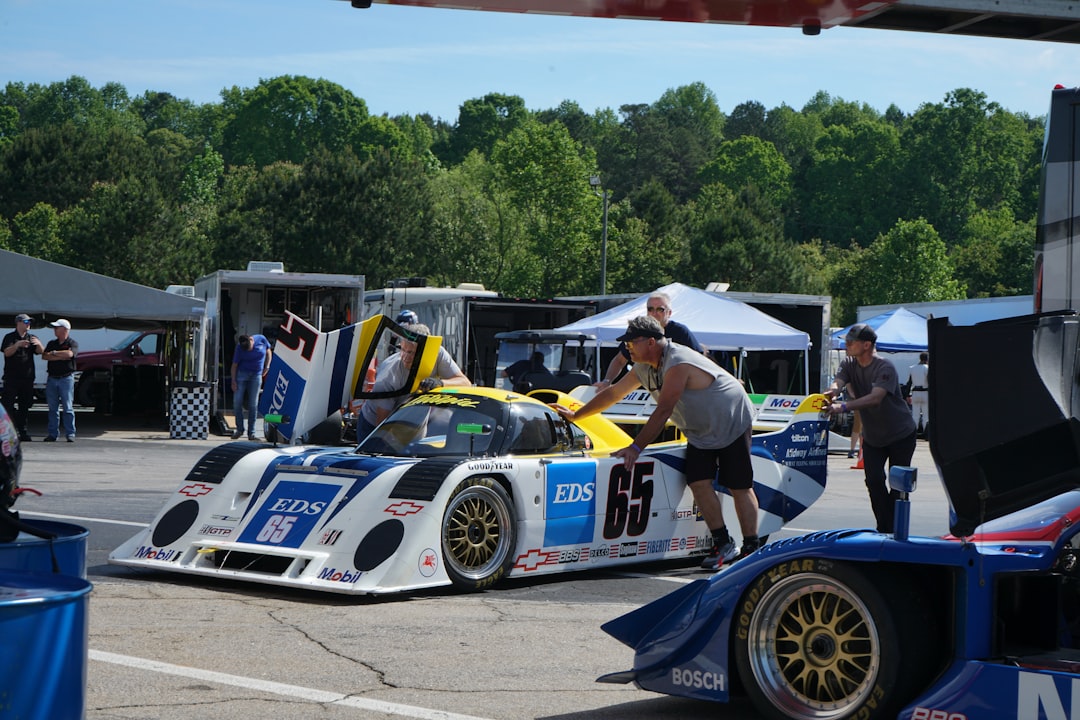Castle Combe Circuit has a storied legacy as one of the UK's most cherished motorsport venues. Its transformation from a Royal Air Force airfield to a racing circuit post-World War II marked the beginning of an illustrious chapter in British racing history. The circuit’s perimeter road, which was initially laid down in April 1943 to serve as a training ground for Airspeed Oxfords, became the tarmac that would entertain generations of motorsport enthusiasts.

Google Maps: Castle Combe Circuit Map
In this Article:
Castle Combe Circuit
Origins and Development (1950s - 1960s)
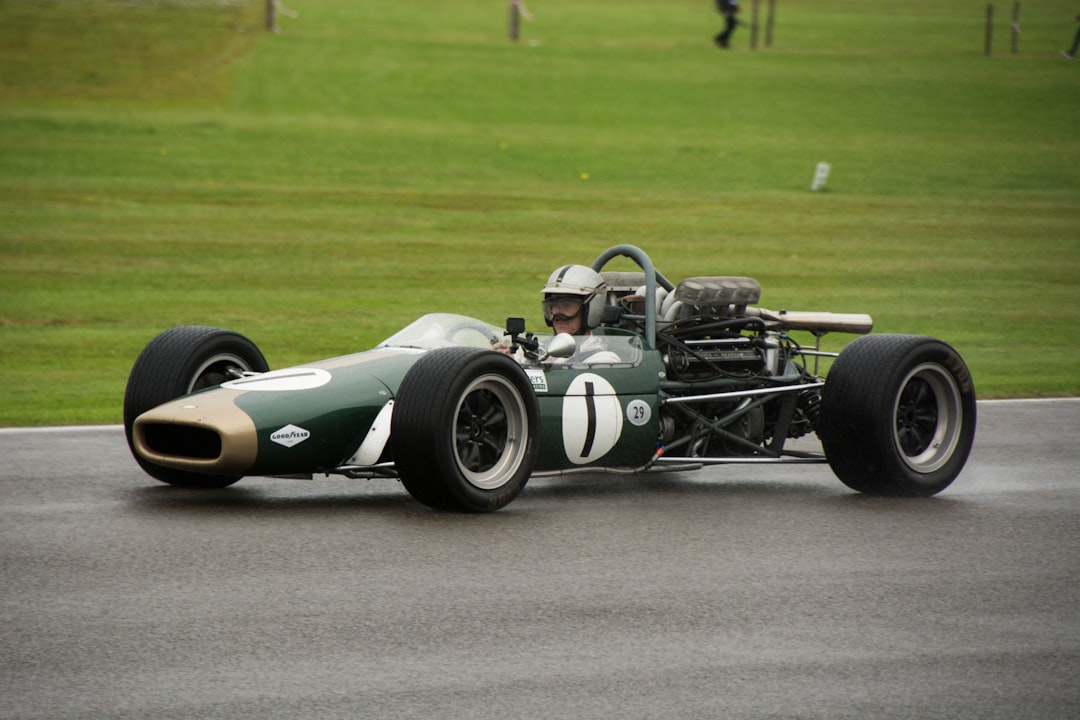
Photo by Jeff Cooper
In the 1950s and 1960s, the Castle Combe Circuit experienced significant growth and development, solidifying its position as a prominent racing venue.
1950 marked a monumental year for Castle Combe Circuit as it hosted its inaugural race event on July 8th. The circuit quickly captured the attention and admiration of the motorsport community. Its picturesque setting in the Wiltshire countryside, combined with the challenging track layout, made it an instant favorite among drivers and spectators alike.
Throughout the 1950s, Castle Combe steadily established itself as a popular destination for both car and motorcycle racing. The original circuit layout spanned 1.84 miles and featured a combination of fast straights, sweeping bends, and demanding corners. This configuration provided an exhilarating and technically demanding racing experience, attracting skilled drivers from various disciplines.
The reputation of Castle Combe Race Circuit grew as legendary drivers graced its track. Icons like Stirling Moss, known for his exceptional talent and numerous victories, competed at Castle Combe, leaving their mark on the circuit's history. Roy Salvadori, another highly accomplished driver who competed in Formula One and sports car racing, also showcased his skills on this challenging track. Additionally, Mike Hawthorn, the first British Formula One World Champion, participated in races at Castle Combe, further adding to the circuit's prestige.
During the 1950s and 1960s, Castle Combe Circuit hosted a diverse range of competition machinery. This period witnessed the presence of various racing car categories, including Formula 3 cars, which served as a breeding ground for young talent aspiring to reach higher levels of motorsport. Grand Touring cars, renowned for their performance and elegance, also graced the circuit during this era. Furthermore, Castle Combe even hosted non-championship events that attracted Formula 1 cars, providing spectators with the rare opportunity to witness these powerful machines in action.
The origins and development of Castle Combe Race Track during the 1950s and 1960s laid a solid foundation for its continued success as a premier motorsport venue. With its challenging track layout, scenic location, and the presence of legendary drivers and notable vehicles, Castle Combe Circuit became synonymous with thrilling racing and remained a beloved destination for motorsport enthusiasts.
Growth and Recognition (1970s - 1980s)
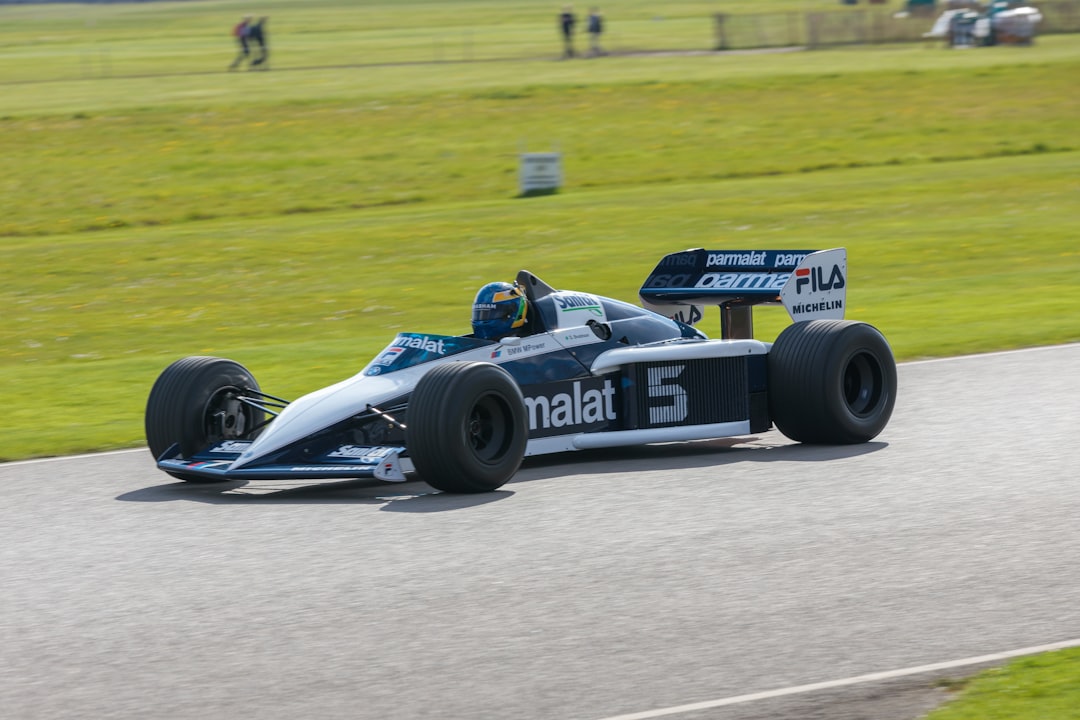
Photo by Paul Harris
The growth and recognition of Castle Combe Circuit continued in the 1970s and 1980s, as the circuit underwent further developments and gained prominence in the motorsport world.
During the 1970s and 1980s, Castle Combe Race Track solidified its position as a significant venue by hosting rounds of prestigious championships. The circuit welcomed the British Touring Car Championship (BTCC), one of the most renowned touring car championships in the world. The presence of the BTCC brought top drivers and teams to Castle Combe, showcasing thrilling and fiercely competitive races. Additionally, the Formula Ford Championship, a breeding ground for aspiring young drivers, chose Castle Combe as a host for its rounds, further enhancing the circuit's reputation.
Local talent also played a vital role in the growth of Castle Combe Circuit during this period. Drivers like Terry Sanger became synonymous with the circuit, with Sanger often seen behind the wheel of his fearsome Chevrolet Camaro in the Special GT races. These drivers not only showcased their skills but also contributed to the vibrant motorsport community that surrounded Castle Combe.
In response to the increasing speeds of racing cars, safety measures and infrastructure improvements were implemented at Castle Combe Race Track. In 1981, chicanes were introduced on the fastest sections of the track to slow down vehicles and enhance safety. These chicanes added an extra element of challenge to the circuit, testing the skills of drivers while keeping them safe.
Additionally, Castle Combe Circuit continued to invest in upgrading its facilities to provide a better experience for competitors and spectators alike. The circuit recognized the importance of offering modern amenities and services to meet the evolving expectations of motorsport enthusiasts.
The growth and recognition of Castle Combe Race Track during the 1970s and 1980s can be attributed to its ability to attract prestigious championships, support local talent, and prioritize safety and infrastructure improvements. These developments further cemented Castle Combe's status as a prominent racing venue, ensuring its continued success in the years to come.
Modern Era and Diversification (1990s - 2000s)
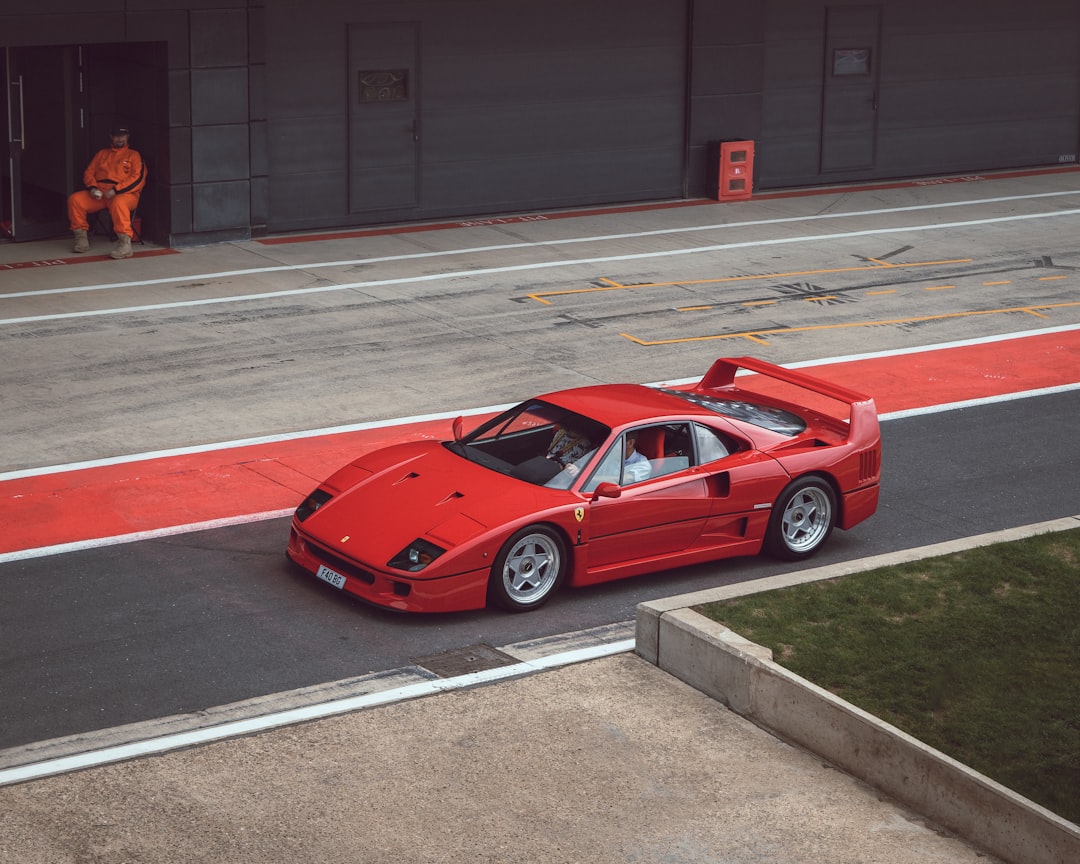
Photo by Richard Fullbrook
The modern era of Castle Combe Circuit, spanning the 1990s to the 2000s, marked a period of diversification and increased engagement with motorsport enthusiasts.
As motorsport gained even more popularity during these decades, Castle Combe Circuit took steps to diversify its event calendar and attract a wider audience. The circuit actively sought international entrants, resulting in the participation of future Formula One stars like David Coulthard and Jenson Button in their formative years. These talented drivers showcased their skills in Formula Ford races at Castle Combe, adding to the circuit's reputation as a platform for emerging talent.
To adapt to the evolving needs of motorsport and ensure the safety of competitors, further modifications were made to the track layout in the late 1990s. One notable change was made to the Quarry corner, a challenging section of the circuit. These modifications aimed to improve safety while maintaining the thrilling nature of the track.
Castle Combe Circuit also prioritized community engagement during this era. The introduction of car club meets provided an opportunity for car enthusiasts to gather and showcase their vehicles, creating a vibrant atmosphere around the circuit. Additionally, driving experiences were offered, allowing fans to get closer to the action than ever before. These experiences allowed individuals to experience the thrill of driving on the same track where racing legends had competed, further fostering a sense of connection between the circuit and its dedicated fan base.
Furthermore, Castle Combe Race Circuit continued to invest in upgrading its facilities and amenities to enhance the overall experience for competitors and spectators. The circuit recognized the importance of providing modern infrastructure to meet the expectations of motorsport enthusiasts and maintain its position as a premier racing venue.
The modern era of Castle Combe Race Track in the 1990s and 2000s saw a focus on diversification, community engagement, and improvements to safety and infrastructure. By attracting international entrants, making track modifications, and offering engaging experiences for fans, Castle Combe solidified its place as a beloved motorsport destination that catered to a wide range of audiences.
Sustainable Future (2010s - Present)
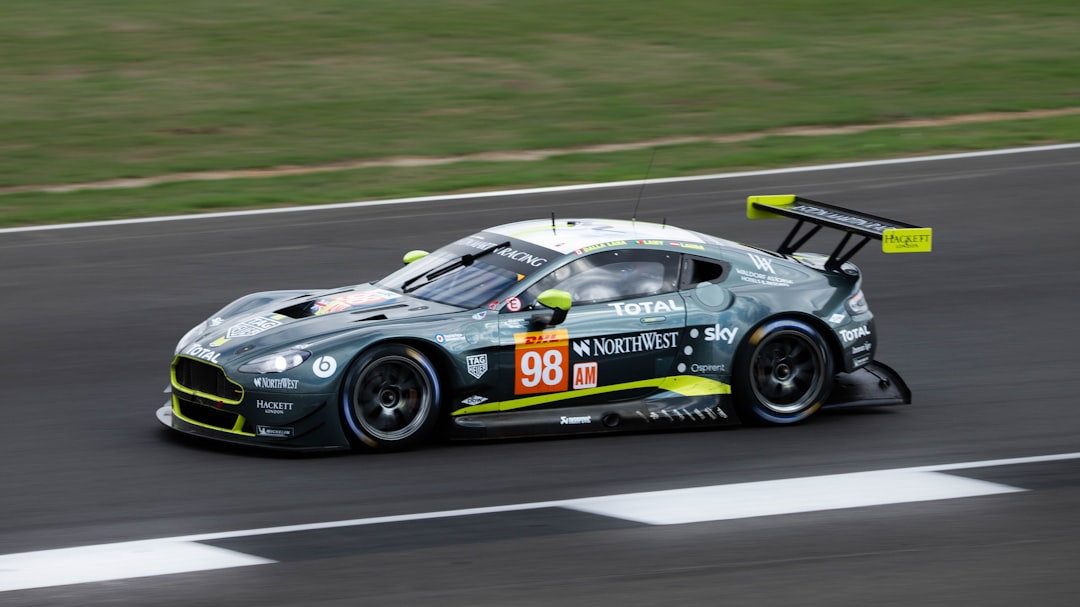
Photo by Jon Hersom
In the 2010s and the present era, Castle Combe Circuit has embraced a sustainable approach while preserving its rich heritage.
As Castle Combe entered the new millennium, the circuit placed a strong emphasis on sustainability and environmental responsibility. Recognizing the importance of preserving its rich heritage, Castle Combe organized celebratory events to mark significant milestones in its history. The circuit's 60th and 70th anniversaries were commemorated with special events that brought together motorsport enthusiasts, competitors, and fans to celebrate its legacy.
To engage with fans and provide thrilling experiences, Castle Combe Race Circuit introduced popular track days and driving experiences. These initiatives allowed enthusiasts to drive on the historic circuit and experience the same adrenaline rush as professional drivers. These experiences have gained tremendous popularity, attracting individuals from various backgrounds who share a passion for motorsport.
However, Castle Combe Race Track also faces modern challenges as it navigates the evolving landscape of motorsport. Noise restrictions have become a concern for many racing circuits, including Castle Combe, as there is a need to balance the excitement of racing with the impact on local communities. The circuit has actively addressed these concerns by implementing measures to mitigate noise levels while ensuring an exhilarating experience for competitors and spectators.
Environmental concerns have also been at the forefront of Castle Combe's agenda. The circuit has taken steps to minimize its ecological footprint by implementing sustainable practices wherever possible. This includes initiatives to reduce waste, promote recycling, and conserve energy. By prioritizing sustainability, Castle Combe aims to contribute to a greener future while maintaining its character and appeal.
In addition to these challenges, Castle Combe Circuit continues to adapt to the ever-changing landscape of motorsport. It seeks to strike a balance between preserving its heritage and embracing advancements in technology and safety measures. By staying true to its roots while embracing innovation, Castle Combe remains a beloved venue that offers thrilling racing experiences.
Castle Combe Circuit's commitment to sustainability, heritage preservation, and addressing contemporary challenges reflects its dedication to ensuring a bright and sustainable future for both motorsport enthusiasts and the surrounding community.
Summary

Map by Castle Combe Circuit
Castle Combe Race Circuit remains a testament to British motorsport history—a place where legendary drivers have left their mark, iconic vehicles have roared past packed crowds, and countless fans have experienced the thrill of racing. It stands as a bridge between the golden era of racing and the contemporary pursuit of speed and competition. For more detailed accounts of events, vehicle specifics, or driver biographies, dedicated motorsport archives or the circuit's official historical records would be ideal sources of information.
FAQ
What is Castle Combe Circuit?
Castle Combe Race Track is a famous motorsport venue located in Wiltshire, England. It has a rich history dating back to 1950 and is known for hosting various racing events and championships.
How can I visit Castle Combe Race Track?
To visit Castle Combe Race Track, check their website for events and tickets. It's easily accessible by car with ample parking. Though no direct public transportation, buses and trains are available in nearby towns. Arrange a taxi or private transport from Chippenham or Bath.
What types of racing events are held at Castle Combe Circuit?
Castle Combe Race Track hosts a wide range of racing events including car races, bike races, and vintage/classic car races. Some of the popular events include the Castle Combe Circuit Racing Club Championship and the Castle Combe Grand National.
Can I participate in races at Castle Combe Circuit?
Yes, Castle Combe Race Track offers opportunities for both amateur and professional racers to participate in various events. You can find more information about participating in races on their website or by contacting the circuit directly.
Are there any facilities available for spectators at Castle Combe Race Track?
Yes, Castle Combe Race Track provides facilities for spectators including grandstands, viewing areas, food stalls, and restroom facilities. There are also designated areas for disabled spectators to ensure accessibility.
Is Castle Combe Circuit suitable for families?
Yes, Castle Combe Race Track is a family-friendly venue. They often organize family-oriented events and provide entertainment options for children. However, it's important to note that motorsport events can be loud and it's advisable to bring hearing protection for young children.
Are there any restrictions on drone usage at Castle Combe Circuit?
Drone usage is generally not permitted at Castle Combe Race Track due to safety and privacy concerns. It's important to respect these guidelines and refrain from flying drones within the circuit premises.
Are there any nearby accommodations for visitors to Castle Combe Circuit?
Yes, there are several accommodation options available near Castle Combe Race Track. These include hotels, bed and breakfasts, and guest houses. It's recommended to book your accommodation in advance, especially during major racing events.
Can I take photographs or videos at Castle Combe Race Circuit?
Yes, spectators are generally allowed to take photographs or videos for personal use during events at Castle Combe Race Track. However, commercial photography or filming may require prior permission from the circuit management.
Can I purchase merchandise or souvenirs at Castle Combe Circuit?
Yes, Castle Combe Race Track has a merchandise shop where you can purchase various souvenirs, clothing, accessories, and memorabilia related to the circuit and its events.
